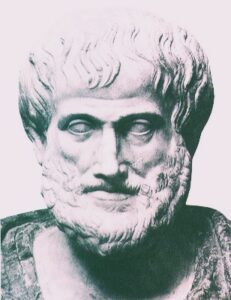Are my fellow New Jersey residents an especially excitable lot? In 1938 “The War of the Worlds” was broadcast on CBS radio as part of Orson Welles’ Mercury Theatre radio series. The H. G. Wells novel on which the play was based includes aliens landing near tiny Grover’s Mill New Jersey. Who knew then that they actually “landed” in Welles” studio? The fake news reports that followed set off a panic in some mid-Jersey households. No doubt about it; we will ready when “they” come.
Pardon the pun, but the question still hangs in the air because of the recent spate of ostensible drone sightings across the northern part of the state. What were we seeing in the winter night sky, beyond the usual raft of planes flying into the five airfields in the region?
The event could raise a tantalizing question: were unknown groups doing reconnaissance on some of the military sites scattered throughout the state? And if new technologies were being tested by the American military, why did official sources swear that there was nothing to see?

The question fed a lot of theories suggesting a conspiracy. The best was from a member of New Jersey’s congressional delegation who claimed to have it on good authority that the drones were sent from an Iranian “mothership” somewhere beyond the state’s boardwalks.
To be sure, there is a lot of traffic over busy parts of the world. Yet the most intriguing reports suggested drones that hovered rather than moved through the air. Obviously, traditional aircraft need both speed and direction to remain airborne. The only aircraft that can remain in one spot relative to the ground are helicopters and the forever-troubled Boeing Osprey. Even high-altitude balloons move with the winds of the atmosphere.
No doubt about it; New Jersey will ready when “they” come.
It became a national obsession to ask what New Jersey residents were seeing or perhaps smoking. Complicating the question was the fact that no drones seemed to have fallen to earth, and no military site facility was compelled to scramble fighters to shoot down intruders. Most puzzling, many supposed drones carried functioning FAA-regulation warning lights: hardly what we would expect from a stealth operation.

At his writing, most Americans seem to have made peace with the alleged sightings, sometimes caulking them off to residents that seem just as excitable as your Uncle Fred. Then, too, maybe this was an extended case of social contagion.
Social contagion is a state of collective awareness that chains through a population, increasing the number of duplicate reactions. Sonic guns in Havana? Maybe the same cause: social contagion fanning out to various diplomats after American embassy personnel first complained of headaches in 2017. Most were aware that years ago the Soviets tried to disrupt embassy operations in the past using some sort of powerful sonic gun. There a growing and shared perception that individual maladies were coming from the same cause. Rather than reaching a purely personal conclusion, a report of feeling unwell can trigger additional cases: a result of unconscious but essentially sympathetic responses in others. That was my conclusion as well, after researching these episodes for a number of years. It is no indictment of human intelligence that we tend to notice what we can name.
All of this fits neatly together. We are also reasonably good at fooling ourselves. And, whatever else can be said, there are lots of objects in the night sky. Perhaps most are airplanes that may appear to hover because we are seeing them from one end of the invisible line they are following.
This would all work for me if I had not “seen” what appeared to be two hovering drones near my home. The location relative to my house was several miles away. Both were barely above the horizon, each with a red light, hovering next to each other, but seemingly stationary in relation to the ground. They seemed to be over woods that would seem to offer no reason to pause, except for a buried high pressure gas line that runs through into the New York metropolitan area. My attention was initially drawn to the sound of something flying overhead. This is what drew me to the window to look. The best connect-the-dots explanation was that some drones were looking for the killer of the United Healthcare CEO killed a few days earlier in New York. I had this narrative all ready to go. Even so, if you look long enough, the presence of so many tiny specks of light in the night sky can feed a range of explanations.
![]()





